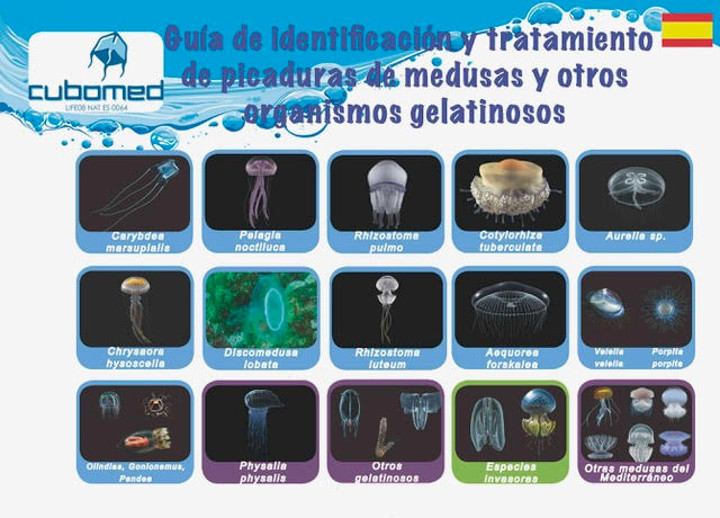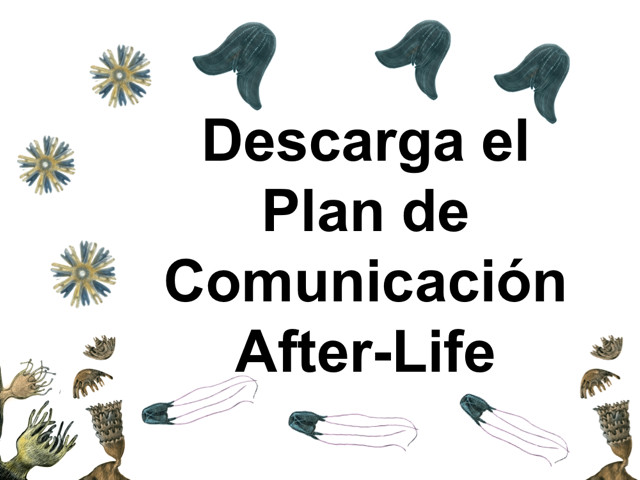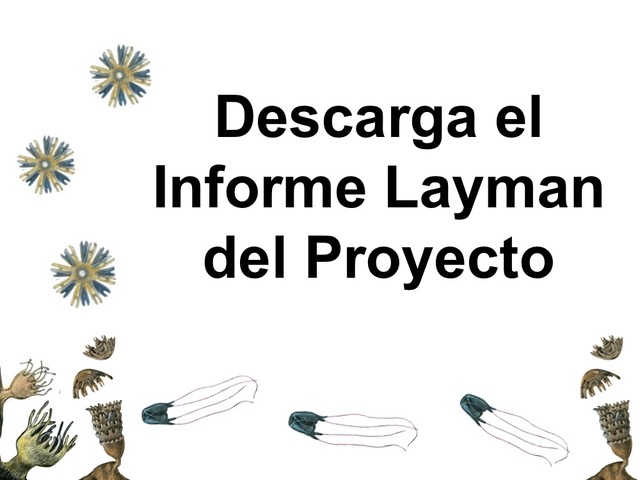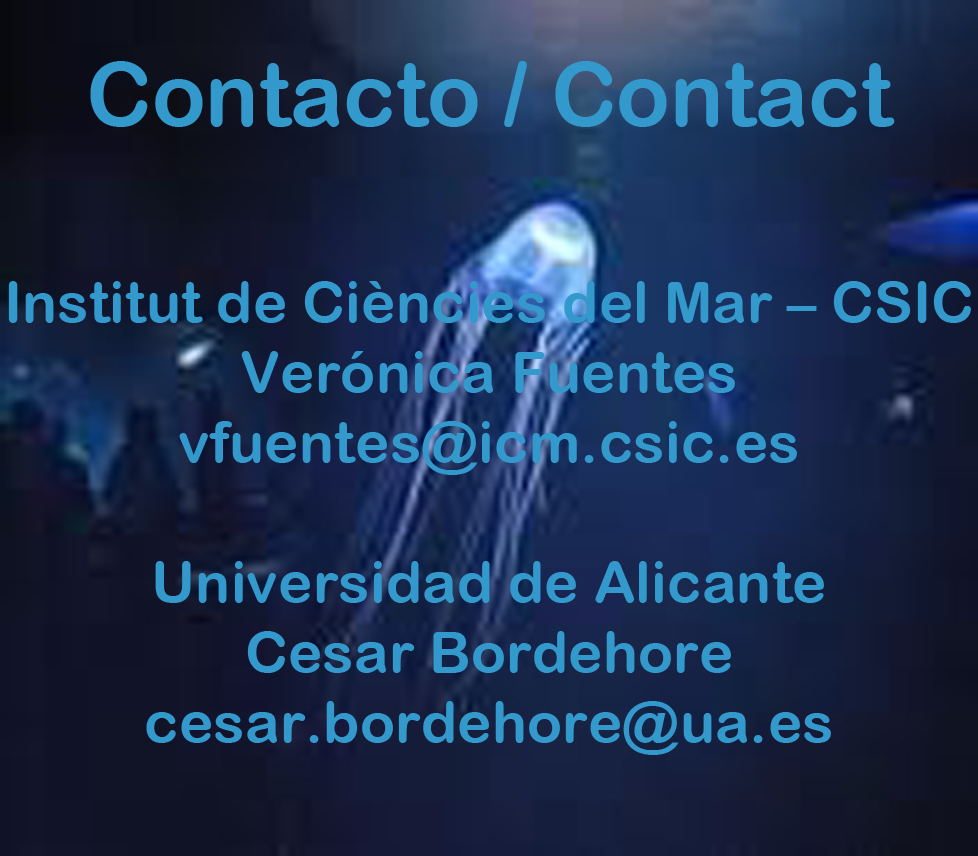
Carybdea marsupialis
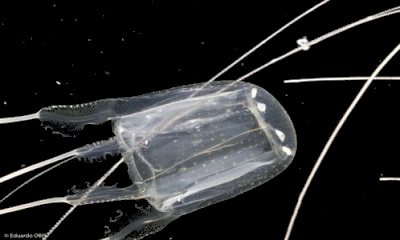
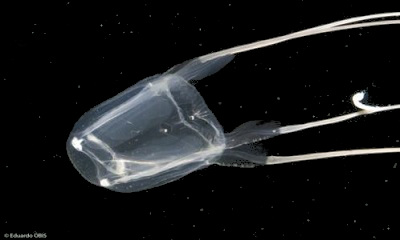
Carybdea marsupialis (Linné 1758) belongs to the Cuboza class, which together with the Antozoa, Hidrozoa and Scyfozoa classes conforms the Filum Cnidaria (from Greek “cnida” = nettle). This term is used to reference a common characteristic of cnidarians, which is the possession of stinging cells called cnidocists distributed over the body surface. These cells have defensive and capture purposes.
Jellyfish belonging to the Cubozoa class are named "cubomedusae" or "box jellyfish" due to the cubic form of its umbrella. Although cubozoans constitute a small fraction within Cnidaria, the number of described species of cubozoans has increased over recent years. Fifty species actually form part of this group (Bentlage et al, 2009) that are then subgrouped in two orders: Chirodropida (Haeckel, 1880) and Carybdeida (Gegenbaur, 1857), which includes the species C. marsupialis.
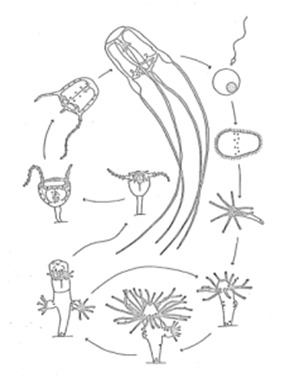
Life cycle of box jellyfish
The common life cycle of Carybdeids comprises a benthic polyp phase with asexual reproduction, and a swimming medusa phase with sexual reproduction. In some species internal fertilisation has been observed to transfer sperm from male to female (Lewis, et. al, 2005). The embryos develop over consecutive days from fertilisation to planula larval stage. The larva stay on the sea bed for approximately two days after fertilization and is then transformed into a polyp.
C. marsupialis polyps develop tentacles in the calyx over 24 hours, with a stinging cell (cnidocist) at the end. When the polyp has 12 tentacles is capable to reproduce through producing secondary polyps that arise from the region delimited by the calyx and the stalk. These polyps are set free from the principal polyp and they have the capacity to creep all over the sea bed. When increasing temperatures polyps begin to metamorphose: the calyx gradually transforms into a small medusa that resembles morphological to adults. The small box jellyfish will grow up to 30-40mm (Kramp, 1961) which is the size of adult individuals which are able to reproduce.
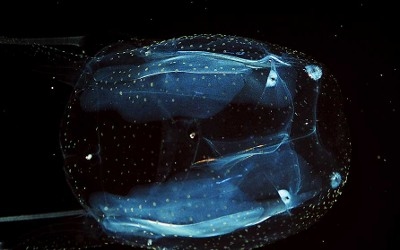
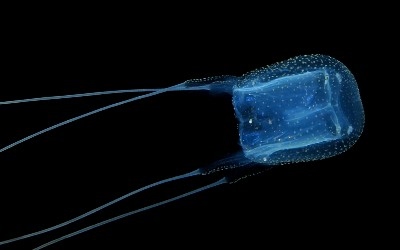
Cubozoans can be found in all oceans, typically in tropical and sub-tropical regions, in shallow coastal zones (Mayer, 1910; Guest, 1959; Franc, 1994; Coates, 2003). Carybdea species are largely distributed in the tropical waters of the Atlantic and large populations are found in the Caribbean (Kramo, 1961; Sanchez-Rodriguéz et al. 2006). Although Carybdea marsupialis is not a species common to the Mediterranean Sea, over recent decades it has been detected at some points in the Adriatic Sea (Di Camillo et al., 2006) and massive appearances of this cubomedusa were registered in some spanish coastal zones (Bordehore et al., 2011).
The relationship between C. marsupialis populations from the Mediterranean basin with others from warmer zones, such as Puerto Rico or California should be studied in order to understand the possible link with the colonization of the Mediterranean region.
Most of the studies on Cubozoans have been justified on the basis of the interaction of these organisms with bathers (Peca et al., 1997). These studies have contributed to a better understanding on the composition of the venomous substances of the cnidocists (Di Camillo et al., 2006; Sánchez-Rodríguez et al., 2006) or the vision system of many cubozoan species (Coates, 2003; Gershwin and Dawes, 2008) but little is known about their ecology, physiology and biology. Some investigations about the life cycle reveal the existence of two types of metamorphosis in this species, one of which displays similarities with scyfomedusae (Scyfozoa), where once the formation of the medusa is produced, a small remnant of the polyp stays on the sea bed to generate a new polyp (Straehler-Pohl and jarms, 2005; Stangl et al., 2002). These studies have increased the knowledge about the reproductive capacity of the polyp phase of this species, and have also revealed the significant evolution relationships.
The LIFE CUBOMED project is undertaking studies that pursue a profound understanding of the ecological role that this species and its interaction has with other components of the ecosystem, in order to determine the potential impact that such high densities of this species could produce on coastal areas.

